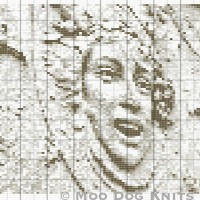“Mathematical reasoning may be regarded rather schematically as the exercise of a combination of two facilities, which we may call intuition and ingenuity.” – Alan Turing
The page is blank. Here is an idea to capture – how best to do that?

Digital photography perhaps. Take the image, say, of a coneflower with center that displays a golden radius – then import the information. Use software to cut, manipulate, transform. Or a graph program, to chart the design. Step and repeat, gradiate colors, distort. Apply creativity. Choose which method will be used to communicate what you see that is not yet visible because it has not yet come into being. Mechanical thinkers may be known as engineers – seeing and working out what will happen if….back up. Try this pathway instead.
What is an engineer? TryEngineering.org puts some words on it: “Dreamer. Innovator. Researcher. Problem Solver. Inventor. Creator. All are terms that aptly describe the characteristics of an engineer.” Those who works with the land and livestock also innovate – stiles, fences, gates. Knowing quirks of livestock. Spatial thinking to get things done, fix a jam, tote a youngster to get home.
Charted design is a mathematical language to replicate almost anything as a three-dimensional or two-dimensional form. Knitting is binary, two stitches used in endless variations: Knit (1), purl (0).
Once an image is translated into digital language – it can be transformed. To help with that process, Stitch Fiddle converts images into chart or a grid language. Yes, creators retain ownership of designs. And the results – from frequently asked questions -“you can do whatever you want with your own charts. By default, your charts are only visible to you. You can share your charts with other people by clicking on share in the menu.”
Craft or computation? Is it not obvious that analytical skills are used when designing with one and zero, knit and purl? “…with the further goal of exploring how this project can be used to draw connections between craft and computation for amateur knitters. This could be especially helpful for girls and young women with crafting experience but little exposure to programming… To encourage users to tinker with their patterns, the visualizer allows users to edit their patterns manually by modifying existing patterns stitch by stitch, or they may edit programmatically by writing and modifying Javascript code to generate full patterns.” – Knitting Visualizer, Stephanie Yang, Columbia University Teachers College, (IDC 2017).
To be continued.
